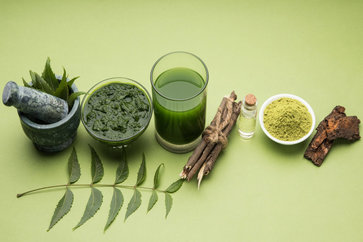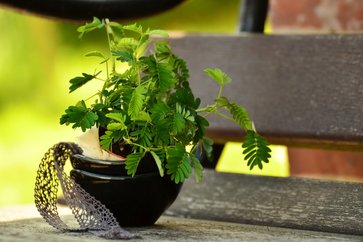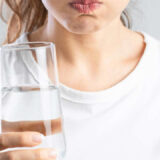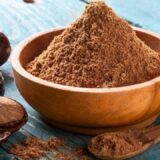Ayurvedic Treatment for Vitiligo (Shwitra): Balancing Doshas
Vitiligo, or leukoderma, is indeed a condition that leads to the loss of skin pigment, resulting in noticeable white patches. This can be emotionally challenging for those affected, as societal perceptions often impact self-esteem and lead to feelings of isolation or anxiety.
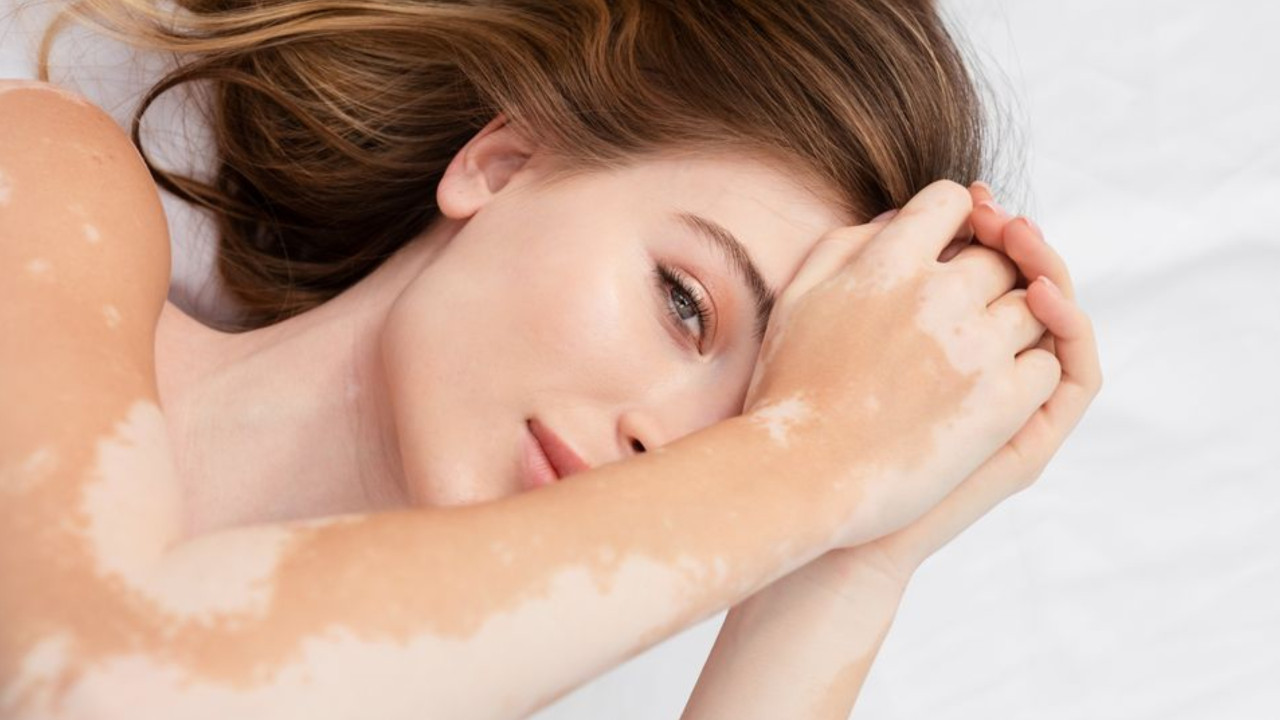
The visibility of the condition can also provoke unwarranted attention or stigma, making it crucial for individuals to find supportive environments. It’s great to hear that Ayurveda offers a holistic approach to managing vitiligo. Ayurvedic treatments often focus on balancing the body’s doshas, using natural remedies, dietary changes, and lifestyle modifications to promote overall skin health.
These treatments can include herbal formulations, detoxification methods, and practices like yoga and meditation to enhance mental resilience. Moreover, Ayurveda emphasizes the importance of individual constitution, tailoring treatments to each person’s unique needs.
This personalized approach can foster a sense of empowerment and control over one’s health. Patients are encouraged to stay positive and seek support from healthcare professionals, family, and community.
Mental well-being plays a significant role in managing the condition. Engaging in open conversations about vitiligo can also help reduce stigma and promote understanding.
What is Vitiligo?
Vitiligo is a long-term skin condition characterized by patches of depigmented skin. These patches occur when melanocytes—the cells responsible for producing melanin, the pigment that gives skin its color—are destroyed or cease functioning. As a result, affected areas of the skin lose their natural color and may appear lighter or completely white.
The exact cause of vitiligo is not yet fully understood, but it is believed to involve a combination of genetic, autoimmune, and environmental factors. Genetic predisposition can play a significant role, as individuals with a family history of vitiligo or other autoimmune disorders may be more susceptible.
Environmental triggers, such as stress, sun exposure, and certain chemicals, may also contribute to the condition’s onset or progression. These factors can exacerbate the loss of pigmentation and influence the severity of the condition.
Understanding the complex interplay of these elements is crucial for effective management and treatment of vitiligo. Continued research is essential to uncover the underlying mechanisms and develop targeted therapies.
Understanding Vitiligo through Ayurveda
Vitiligo, a condition characterized by loss of skin pigment, is approached in Ayurveda as a multifaceted disorder. This holistic perspective emphasizes not only the physical aspects but also the emotional and environmental influences on health.
1. Imbalance of Pitta Dosha
- Manifestation of Pitta Imbalance: When Pitta is aggravated, it can lead to inflammation, rashes, and skin disorders. Symptoms may include redness, burning sensations, and heat in the affected areas.
- Cooling Therapies: Ayurveda suggests incorporating cooling practices, such as applying aloe vera gel, using coconut oil, or incorporating soothing herbs like coriander and fennel into the diet.
2. Toxic Accumulation (Ama)
- Impact of Ama: Ama can disrupt the body’s natural functions and lead to skin issues, including vitiligo. It can accumulate due to poor dietary choices, sedentary lifestyle, or emotional stress.
- Detoxification Practices: Regular detoxification is emphasized, with therapies like Shodhana (purification) to cleanse the body of toxins. Herbal formulations like Triphala may be recommended to support digestion and elimination.
3. Digestive Imbalances
- Strengthening Agni: A well-functioning Agni ensures the proper transformation of food into nutrients. Weak digestion can lead to nutrient deficiencies that may affect skin health.
- Dietary Guidelines: Ayurveda recommends consuming warm, cooked foods that are easy to digest. Incorporating spices like ginger, cumin, and turmeric can enhance digestive strength and promote nutrient absorption.
4. Psychological Factors
- Emotional Well-being: Stress, anxiety, and unresolved emotions can exacerbate Pitta, leading to further skin issues. This interplay between mind and body is a core principle in Ayurveda.
- Mindfulness Practices: Techniques such as mindfulness meditation, yoga, and pranayama (breath control) can be beneficial for emotional balance. Engaging in creative activities or hobbies can also help alleviate stress.
5. Genetic Predisposition
- Understanding Prakriti: Each individual’s constitution (Prakriti) can influence their susceptibility to certain health conditions, including vitiligo.
- Preventive Measures: Ayurveda emphasizes preventive care tailored to one’s constitution, including regular check-ups, maintaining a balanced lifestyle, and adopting healthy habits to counteract genetic predispositions.
Understanding the Causes of Vitiligo
Before pursuing treatment, it’s essential to understand the underlying causes of vitiligo. According to Ayurveda, vitiligo, known as “Switra,” is categorized as ‘tridosaj,’ indicating that all three doshas—vata, pitta, and kapha—are disturbed.
Among these, pitta (associated with heat) plays a crucial role. Ayurveda identifies five types of pitta, with disturbances in ‘Bhrajaka pitta’—the type responsible for maintaining skin color, luster, and glow—being particularly relevant to vitiligo.
Ayurveda also points to dietary habits, specifically ‘virudh ahar sevan’ (incompatible food combinations), as a common cause of vitiligo and leucoderma. An example of this is consuming fish and milk together. Such combinations can lead to autoimmunity, where the body’s immune system mistakenly attacks its own cells and tissues.
This process generates toxins within the body, disrupting the immune system and leading to the disturbance of Bhrajaka pitta, resulting in reduced or absent pigmentation.
In modern medical terms, this disturbance can lead to the inactivity or degeneration of melanocyte cells, which are responsible for producing skin pigment. Thus, vitiligo occurs as the skin loses its color, commonly referred to as “safed daag” in Hindi.
Factors Responsible for Vitiligo
Vitiligo can be influenced by a variety of factors, and research suggests that women are generally more prone to the condition than men. Here are some key factors associated with the onset of vitiligo:
1. Jaundice: Liver dysfunction, such as jaundice, can disrupt the body’s overall health and may trigger vitiligo. The liver plays a crucial role in detoxification and metabolism, and any impairment can have systemic effects.
2. Liver Problems: Other liver issues, including hepatitis or fatty liver disease, can similarly affect skin health and contribute to pigment loss. A healthy liver is vital for maintaining skin integrity.
3. Mental Worry: Emotional stress and mental worry are significant factors; psychological stress can exacerbate the condition. Stress can lead to hormonal imbalances and inflammation, which may influence the immune response and pigment production.
4. Typhoid: Infections like typhoid fever can impact the immune system and potentially lead to the development of vitiligo. Infections may trigger autoimmune responses, where the body mistakenly targets its own cells.
5. Burn Injuries: Physical trauma to the skin, including burn injuries, can trigger vitiligo in the affected areas as the skin heals. This can disrupt normal pigmentation processes, leading to color loss.
6. Parasites in the Alimentary Canal: The presence of parasites can disrupt overall health and immunity, potentially contributing to the onset of vitiligo. A compromised digestive system may lead to toxin buildup and nutrient deficiencies.
7. Hereditary Factors: Genetics also play a significant role; a family history of vitiligo or other autoimmune disorders can increase the likelihood of developing the condition. Specific genes associated with immune regulation and pigmentation may predispose individuals to vitiligo.
8. Autoimmune Conditions: The presence of other autoimmune diseases, such as thyroid disorders or alopecia areata, can increase the risk of vitiligo. This suggests a shared underlying mechanism in how the immune system functions.
9. Environmental Triggers: Exposure to certain chemicals or harsh environmental factors, such as sunburn or skin irritants, may also play a role in triggering vitiligo.
10. Hormonal Changes: Hormonal fluctuations, especially during puberty, pregnancy, or menopause, can influence the onset or progression of vitiligo, possibly due to their effects on the immune system and skin health.
Understanding these factors can help in recognizing potential triggers and managing the condition more effectively. If you have concerns about vitiligo or its causes.
Consulting with a healthcare professional can provide tailored advice and support. Early intervention and a comprehensive approach can lead to better outcomes for individuals affected by this condition.
Symptoms of Vitiligo
Vitiligo is often characterized by the sudden appearance of skin changes without accompanying symptoms. Here are some key features:
1. Sudden Skin Changes: Vitiligo typically presents as sudden patches of lighter skin, often noticeable against the surrounding areas. These changes can occur in any part of the body.
2. Small Spots: Initially, small spots may appear, which can be white or pale in color. These spots can develop gradually or emerge unexpectedly.
3. Merging of Spots: These small spots have a natural tendency to merge over time, leading to larger areas of depigmentation. This merging can create irregular shapes and patterns on the skin.
4. Larger Patches: Without appropriate treatment, these spots can expand into larger patches, further affecting the skin’s appearance. The extent and speed of this progression can vary widely among individuals.
5. Painless: Vitiligo is generally painless and does not cause itching or irritation before its onset. The skin may feel normal to the touch, and there is typically no discomfort associated with the condition.
6. No Other Symptoms: Most individuals do not experience additional symptoms, making it primarily a cosmetic concern. However, some may notice changes in hair color in areas affected by vitiligo.
7. Affected Areas: Vitiligo can affect any part of the body, including the face, hands, arms, and legs, as well as mucous membranes and the hair, leading to graying or whitening of hair.
8. Emotional Impact: The appearance of vitiligo can lead to emotional challenges, including feelings of self-consciousness or anxiety about one’s appearance. This psychological aspect can significantly affect quality of life.
Understanding these symptoms can help individuals recognize the condition early and seek appropriate support and treatment options. Early intervention may aid in managing the progression and enhancing overall well-being.
An Ayurvedic Approach to Vitiligo
Ayurvedic treatment for vitiligo aims to address doshic imbalances, stimulate melanin production, and restore skin health. The holistic nature of Ayurveda emphasizes the interconnectedness of body, mind, and spirit, recognizing that skin health reflects overall well-being.
Treatment strategies may therefore include a combination of dietary modifications, herbal remedies, detoxification therapies (Panchakarma), stress management techniques, and lifestyle changes.
By targeting the root causes of the condition, Ayurveda seeks to promote lasting healing rather than temporary relief. Here’s an overview of Ayurvedic treatments commonly used for vitiligo:
1. Dietary Modifications
Pitta-Pacifying Foods
Cooling and Anti-Inflammatory Options: To balance Pitta dosha, it is essential to focus on foods that have a cooling effect on the body. This includes:
- Sweet Fruits: Such as pears, melons, and apples, which help soothe inflammation and provide hydration.
- Leafy Greens: Spinach, kale, and lettuce are rich in nutrients and fiber, promoting digestion and overall health.
- Whole Grains: Foods like barley, quinoa, and basmati rice provide nourishment without aggravating Pitta.
Avoidance of Trigger Foods
- Minimizing Irritants: Certain foods can exacerbate Pitta imbalances, so it’s advisable to limit or avoid:
- Spicy Foods: Chili peppers, mustard, and other spicy ingredients can increase heat in the body and trigger skin issues.
- Sour Foods: Citrus fruits, pickles, and vinegar should be consumed in moderation, as they can aggravate Pitta.
- Fried and Processed Foods: These can create excess heat and toxins in the body, leading to digestive disturbances.
- Incompatible Food Combinations: Ayurveda emphasizes that certain food pairings can disrupt digestion, leading to the formation of ama (toxins). For example:
- Mixing dairy with sour fruits or consuming protein and starch together can hinder digestion and contribute to imbalances.
Incorporation of Specific Nutrients
- Vitamins and Minerals: To support skin health and melanin production, include foods rich in essential nutrients:
- Vitamin B12: Found in dairy, eggs, and fortified cereals, B12 is crucial for cellular health and skin regeneration.
- Vitamin C: Citrus fruits, berries, and bell peppers enhance collagen production and have antioxidant properties, promoting skin health.
- Vitamin E: Nuts, seeds, and avocados are excellent sources, providing protection against oxidative stress and supporting skin repair.
- Folate: Leafy greens, legumes, and fortified grains contribute to healthy skin and cellular function.
Hydration and Herbal Teas
- Staying Hydrated: Drinking plenty of water and herbal teas can help flush out toxins and maintain skin hydration. Favoring herbal teas with cooling properties, such as peppermint or chamomile, can further support Pitta balance.
2. Herbal Remedies
Herbal remedies play a vital role in Ayurvedic treatment for vitiligo, offering natural solutions to restore skin health and balance doshas. Here are some key herbs commonly used:
1. Ginkgo Biloba
- Benefits: Ginkgo biloba is renowned for its potential to enhance circulation and improve blood flow to the skin. This increased circulation can help support melanin production, which is essential for repigmentation in vitiligo.
- Usage: Often taken in capsule or liquid extract form, it may also be applied as an oil to the affected areas for localized benefits.
2. Manjistha
- Benefits: Known as a powerful blood purifier, Manjistha helps detoxify the body and improve skin health. Its anti-inflammatory properties can reduce redness and irritation, making it beneficial for skin conditions like vitiligo.
- Usage: Typically consumed in powder form mixed with warm water or honey. It can also be applied as a paste directly on the skin to enhance its effects.
3. Turmeric
- Benefits: Turmeric is celebrated for its potent anti-inflammatory and antioxidant properties. Curcumin, the active compound in turmeric, helps reduce inflammation and promotes healing, making it useful in managing skin conditions.
- Usage: Turmeric can be taken internally in the form of capsules or added to foods. For topical application, a paste made with turmeric and water or coconut oil can be applied to the affected areas to soothe the skin.
4. Aloe Vera
- Benefits: Aloe vera is widely recognized for its soothing and hydrating properties. It helps reduce skin irritation and supports the healing process, making it an excellent choice for those with vitiligo.
- Usage: Fresh aloe vera gel can be applied directly to the skin for immediate relief. It can also be ingested as a juice to promote overall skin health and hydration from within.
5. Neem
- Benefits: Neem is known for its antibacterial and antifungal properties, making it beneficial for maintaining skin health. It can help reduce inflammation and detoxify the blood, contributing to overall skin improvement.
- Usage: Neem leaves can be made into a paste or infused in oil for topical application, or taken as a supplement to promote internal health.
6. Brahmi
- Benefits: Brahmi is revered for its calming properties, which can help alleviate stress—a factor that may exacerbate skin conditions. It also supports skin healing and rejuvenation.
- Usage: Brahmi can be consumed in powder form, added to smoothies, or applied as an oil to promote relaxation and skin health.
3. Detoxification Therapies (Panchakarma)
Panchakarma is a cornerstone of Ayurvedic treatment, offering a comprehensive approach to detoxification and rejuvenation.
These therapies aim to cleanse the body of ama (toxins) and restore balance to the doshas, which can be particularly beneficial for skin conditions like vitiligo. Here are the key detoxification therapies used in Ayurveda:
1. Virechana (Purgation)
Virechana is a therapeutic process that involves the administration of herbal purgatives to cleanse the gastrointestinal tract and eliminate accumulated toxins.
- Benefits: By promoting the elimination of ama, Virechana helps improve digestion, enhances nutrient absorption, and reduces inflammation. This is crucial for restoring skin health and balancing Pitta dosha, which is often involved in skin disorders.
- Process: Typically, the treatment begins with preparatory steps, including dietary adjustments and herbal oils to prepare the body for cleansing. After the purgation process, rejuvenating therapies may follow to support recovery.
2. Basti (Medicated Enema)
Basti involves the administration of medicated herbal oils or decoctions through the rectum. It is one of the most effective methods for cleansing and rejuvenating the lower digestive tract.
- Benefits: This therapy helps eliminate toxins from the colon, alleviates constipation, and supports overall digestive health. It can also balance Vata dosha, which can be beneficial for those experiencing dryness or irritation in the skin.
- Process: Basti treatments are typically customized based on individual needs and may involve several sessions. It often begins with preparatory therapies, followed by the enema, and concludes with nourishing treatments to restore vitality.
3. Abhyanga (Oil Massage)
Abhyanga is a traditional Ayurvedic oil massage that utilizes warm, medicated oils tailored to the individual’s constitution and specific health concerns.
- Benefits: Regular oil massage improves circulation, promotes lymphatic drainage, and enhances the flow of energy (prana) throughout the body. It also nourishes the skin, providing hydration and soothing irritated areas, making it particularly beneficial for vitiligo.
- Process: Abhyanga is typically performed using specific techniques that stimulate the body’s marma points (energy points) and promote relaxation. Incorporating calming oils, such as coconut or sesame oil infused with healing herbs, can enhance the therapeutic effects.
4. Swedana (Herbal Steam Therapy)
Swedana involves inducing sweating through herbal steam, which helps open the pores and facilitates the release of toxins.
- Benefits: This therapy not only promotes detoxification but also enhances skin health by improving circulation and aiding in the absorption of herbal treatments applied afterward.
- Process: After preparatory therapies, patients are exposed to steam infused with medicinal herbs, promoting relaxation and detoxification.
4. Stress Management Techniques
Managing stress is crucial for maintaining balance in the body and mind, especially in conditions like vitiligo where emotional and psychological factors can exacerbate imbalances.
Ayurvedic practices emphasize holistic approaches to stress management that integrate physical, mental, and emotional well-being. Here are some key techniques:
1. Yoga and Meditation
Yoga combines physical postures (asanas), breath control (pranayama), and meditation to promote overall health and well-being. It helps reduce stress and anxiety, particularly beneficial for balancing Pitta dosha.
- Benefits: Specific asanas can promote relaxation, enhance circulation, and improve flexibility. Additionally, meditation fosters a sense of inner peace and calm, which is essential for emotional resilience.
Recommended Practices:
- Asanas for Relaxation: Gentle poses like Child’s Pose (Balasana), Forward Bend (Paschimottanasana), and Legs-Up-the-Wall Pose (Viparita Karani) can help calm the nervous system.
- Meditation Techniques: Mindfulness meditation or guided visualizations can enhance mental clarity and emotional stability. Regular practice encourages a deep sense of relaxation and reduces stress levels.
2. Breathing Exercises (Pranayama)
Pranayama involves various breathing techniques designed to enhance the flow of prana (life energy) in the body, helping to balance the mind and emotions.
- Benefits: Controlled breathing can reduce anxiety, improve focus, and promote a sense of calm. Techniques like Nadi Shodhana (alternate nostril breathing) help harmonize the left and right hemispheres of the brain, promoting overall balance.
Key Techniques:
- Nadi Shodhana: This technique involves inhaling through one nostril, holding the breath, and exhaling through the other, then alternating. It’s particularly effective for reducing stress and clearing the mind.
- Ujjayi Breathing: Known as “victorious breath,” this technique involves a slight constriction in the throat while breathing, creating a soothing sound that calms the mind.
3. Mindfulness Practices
Mindfulness involves being fully present in the moment, which can help reduce stress and promote emotional well-being. It encourages awareness of thoughts and feelings without judgment.
- Benefits: Engaging in mindfulness can lead to increased resilience, reduced anxiety, and improved emotional regulation. It helps individuals develop a deeper understanding of their mental patterns, allowing for healthier responses to stressors.
Recommended Practices:
- Mindful Observation: Taking time to observe thoughts, sensations, and emotions can help foster a sense of acceptance and peace. Practices like mindful walking or eating can enhance this awareness.
- Positive Affirmations: Regularly practicing positive affirmations can shift negative thought patterns, promote self-compassion, and boost confidence. Phrases such as “I am healthy and balanced” or “My skin is healing” can be powerful tools.
5. Lifestyle Changes
Making mindful lifestyle changes can significantly enhance overall health and contribute to the effective management of vitiligo. Ayurveda emphasizes the importance of balance in daily life, and these practices can help establish stability and promote well-being.
1. Establishing a Routine (Dinacharya)
Dinacharya refers to the practice of maintaining a consistent daily routine that aligns with natural rhythms.
Benefits:
- Stability and Balance: A structured routine helps regulate bodily functions, including digestion and sleep, which are crucial for skin health.
- Improved Digestion: Consistent meal times support optimal digestion (Agni), reducing the likelihood of toxin accumulation (ama).
Key Practices:
- Consistent Meal Times: Eating meals at the same times each day helps maintain digestive fire and supports metabolic health.
- Sleep Schedule: Going to bed and waking up at the same time each day promotes restful sleep, essential for skin regeneration and overall health.
- Self-Care Rituals: Incorporating daily self-care practices, such as oil massages or skin care routines, can enhance relaxation and skin nourishment.
2. Environmental Considerations
The environment plays a significant role in skin health, and reducing exposure to harmful elements can help prevent aggravation of symptoms.
Benefits:
- Protection from Irritants: Limiting contact with harsh chemicals and pollutants supports skin integrity and overall health.
- Sun Protection: Excessive sun exposure can exacerbate skin issues, so protective measures are essential.
Key Practices:
- Use Natural Products: Opt for skincare and household products that are free from harsh chemicals and toxins. Natural ingredients are often gentler on the skin.
- Sunscreen: Regular use of a suitable sunscreen can protect depigmented areas from sunburn and further irritation.
- Air Quality: Ensure a clean living environment by using air purifiers and reducing indoor pollutants whenever possible.
3. Hydration and Rest
Adequate hydration and restful sleep are foundational elements of health that support skin rejuvenation and overall well-being.
Benefits:
- Hydration: Drinking enough water helps flush out toxins and keeps the skin hydrated and elastic, which is crucial for skin health.
- Restorative Sleep: Quality sleep supports the body’s healing processes, helping to rejuvenate skin and balance hormones.
Key Practices:
- Stay Hydrated: Aim to drink plenty of water throughout the day. Herbal teas and infusions can also contribute to hydration while providing additional health benefits.
- Sleep Hygiene: Create a calming bedtime routine, limit screen time before bed, and ensure a comfortable sleeping environment to promote restful sleep.
Integrating these lifestyle changes into daily life can create a supportive framework for managing vitiligo and enhancing overall health. Working with a qualified Ayurvedic practitioner can further personalize these practices to suit individual needs and promote holistic healing.
References:

